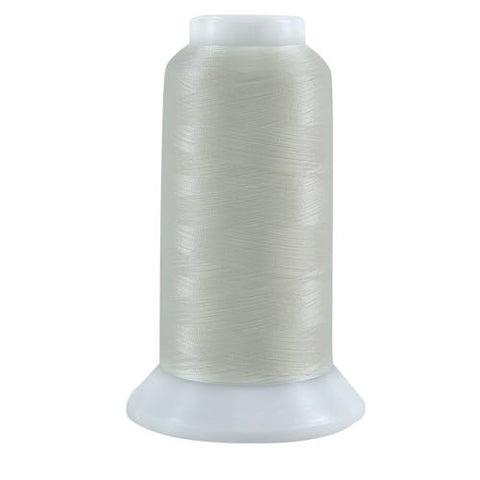Pre-wound. Lint-free. Cotton. Poly. With so many possibilities, how do you choose a bobbin thread?
As if there aren’t enough variables in machine embroidery, you now have options when it comes to choosing bobbin thread.
Pre-wound vs. Machine-wound

Pre-wound bobbins are a wonderful option for a couple of reasons. One is the obvious convenience of not having to stop mid-project to wind a new bobbin. The other is that, depending on the manufacturer, you can get from 30% to 50% more thread on a pre-wound bobbin than on a bobbin that you wind yourself, so you'll stop less often.
Weights
Most bobbin thread is 60wt although you can also find a thinner 90wt (the larger the number, the finer the thread for top and bobbin). The 60wt works fine with most all embroidery with the exception of freestanding lace (FSL). When stitching FSL, you must use the same thread in bobbin that you're stitching with on top.
For fine, heirloom stitching, the 90wt. may be a better choice. Reducing the weight (top and bottom) for tiny lettering will give you better results as well.
Lint or No Lint
Not all bobbin threads are created equal. One of the biggest problems is lint. Lint can build up in the bobbin case causing problems with tension and stitch quality. Two of the best according to ArtNews.com in 2020 are Superior Threads Bottom Line and Aurifil.
Bottom Line is a two-ply polyester filament thread available in 55 colors. Aurifil bobbin thread is made from 100% long-staple Egyptian cotton. Both are lint-free 60wt. bobbin threads.

My favorite? Bottom Line (no affiliation). I like to buy the 3,000-yard spools and wind them from a thread stand. Bonnie's favorite is Exquisite pre-wound bobbin thread (no affiliation). Great bobbin thread with the convenience and time saving benefits of a pre-wound bobbin. There are dozens and dozens of other good bobbin threads out there.
So what bobbin thread do you use?
The design in the image header is from Spooky Buddies.



Bonnie Welsh - August 09, 2021
HI Bev—I did some quick math and have found that there’s approximately .12 difference between winding your own bobbin from large 5,500 yard cones and buying pre-wounds by the gross (.23 winding yourself or .31 pre-wound). Of course prices vary between brands and sizes of spools—but this was a simple comparison not all-inclusive. Still, it gives you an idea. For the convenience and time savings of not having to stop as often during a project, remove everything and change bobbins, I’m a big believer in pre-wound bobbins. Plus, how many times have you wound a bobbin that you had to trash because it wound in a mess? But Debbie likes to wind her own. Everyone has their own style and what works best for them. There’s no right or wrong here—just personal preference of what works best for you. I use plastic sided pre-wound bobbins and have reused them as well.
BevM - August 09, 2021
What is the difference in actual cost between pre-wound and home-wound bobbins? I always assumed the wasted bobbin itself in pre-wound would cost more.